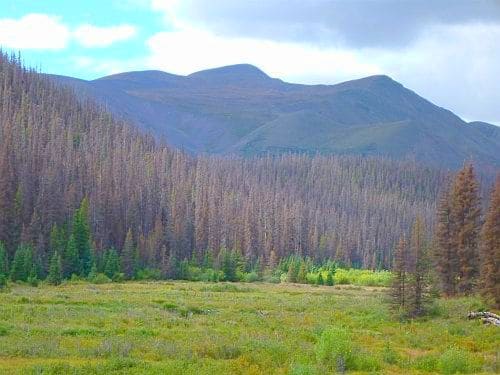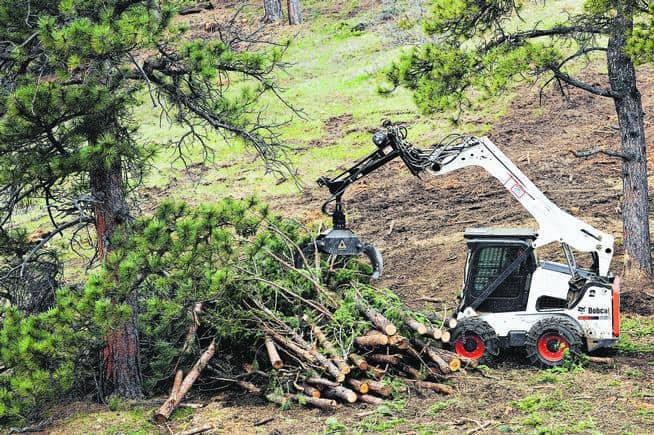I continue to be fascinated by the difference between “fuels treatments on NFS land” (controversial! scientifically questionable! excuses for rampant logging!) and “fuels treatments on anyone else’s land” (wish we could do more! protects communities!). To that end, the difference between national, regional and local coverage is interesting. Here’s about as local as you can get.. YourHub of the Denver Post in Jefferson County, CO.
EVERGREEN —Last year, Dave Flanagan’s insurance provider threatened to drop fire insurance for his Evergreen-area property due to poor fire mitigation around his property.
“I had to point out to them I was doing everything per the standards,” he said, but he couldn’t say the same about his neighbor, one of the parks in the Denver Mountain Parks system.
Denver Mountain Parks, owned by the city of Denver, occupy 14,000 acres of land and 10,000 of those acres are forested, said Andy Perri, Denver Mountain Parks’ forestry program manager.
Denver hired Perri in 2010 to focus on fire mitigation efforts and overall forest health.
Since then, Denver Mountain Parks has received $1 million to go toward mitigation efforts on 800 acres of parkland. It expects to receive $500,000 more in 2014, according to an April 30 release.
“Denver Mountain Parks is somewhat limited as far as what we do,” Perri said, referring to the cost of going into sometimes hard-to-access forest to remove dead and downed trees, reduce fuel on the ground and thin trees. He said the cost of such efforts can cost from $500 to $2,200 an acre or more.
Perri admits the numbers seem like a drop in a bucket, but he said a lot of other factors go into the decision of where to put resources, including, but not limited to, wildland-urban interface.
“Of course I want to treat right behind everyone’s house,” he said. “But you also have to look at strategic placement of these projects.”
Perri said he takes calls from concerned residents, goes to the land that is of concern and adds it to his endless project list.
This was the case with Birch Hill Park near North Turkey Creek in south Evergreen. A forest management plan for the area was written, which was used to get a grant for the project. Denver Mountain Parks hired the Jefferson County Sheriff’s fire mitigation program to do the work.
Though it does such work for hire, the Jeffco Sheriff’s program doesn’t have any funds set aside specifically for mitigation work — its main focus is response management, such as creating fuel breaks in the path of active fires, said Mark Gutke, director of critical incident response for the Jefferson County Sheriff’s Office. For preventive mitigation, it helps communities find grants for wildfire protection plans.
It comes down to the property owner, Gutke said.
“The problem is the funding to attack (the acreage) and the desire from property owners, whether it’s the government or private,” he said.
Denver Mountain Parks and Jefferson County Open Space have programs to allow residents to mitigate park property bordering their private property through permit processes. However, like community wildfire protection plans, that requires an investment on the landowner’s part.
Keith Bol is a natural resource team leader for Jefferson County Open Space, which manages more than 53,000 acres of parkland. He said Jeffco Open Space’s efforts focus on healthy forest management, which often includes mitigation.
“We try to tie in our forest management activities into these fuel breaks or fire mitigation work,” he said. “We try to look at a larger area. A lot of it we try to identify by the health of the forest already. By making it healthier, we’re probably going to make it more fire-resistant.”
When it comes to projects focused on mitigation, it’s about proactive community involvement. He said work is more likely to happen where there is private property work nearby.
“We start to look at communities that are working together, willing to do something in an entire development,” Bol said. “We will work on our property if they are doing work on their property.”


